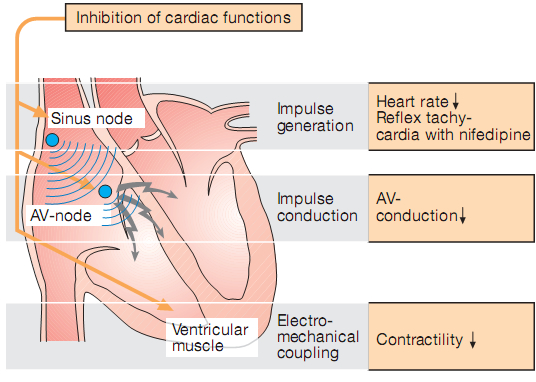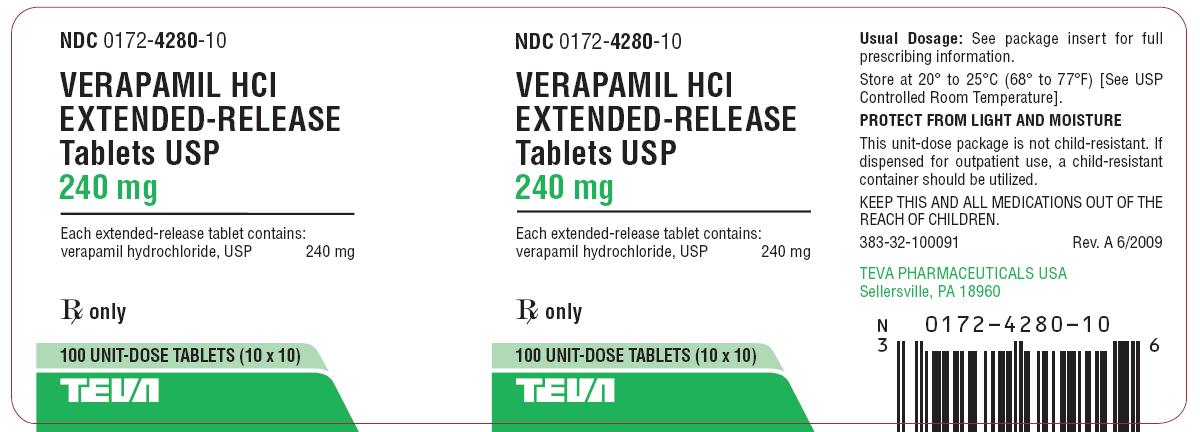Page Contents
WHAT IS IT?
Verapamil (Verelan): is a non-dihydropyridine calcium channel blocker/class IV anti arrhythmic drug. It blocks voltage-dependent L-type calcium channels of cardiac/smooth muscle which in turn will diminish their contractility. Furthermore, it decreases calcium influx to the SA/AV nodes, decreasing conduction velocity/prolonging conduction (phase 0, and phase 4 of the cardiac cycle for the pacemaker cells) which will increase the PR interval on an EKG. It is similar to a beta blocker in its effect.

WHEN DO WE USE IT?
Angina, supraventricular tachyarrhythmias, hypertrophic cardiomyopathy
Verapamil works on the ventricles! Verapamil has the most activity on the heart (compared to other calcium channel blockers)
WHEN DO WE AVOID USING IT?
Verapamil has the least activity on smooth muscle (other calcium channel blockers are more potent for smooth muscle) and is not the most effect vasodilator.
HOW IS IT ADMINISTERED?
Either orally or by IV

HOW IS IT DOSED?
For migraines:
- A possible starting dose can be: 360 mg, one time a day (at night), for migraine prophylaxis.
WHAT ARE THE SIDE EFFECTS/TOXICITY?
Calcium channel blockers generally can cause cardiac depression, AV block, peripheral edema, dizziness, constipation, gingival hyperplasia
Verapamil specifically can cause hyperprolactinemia
ANYTHING ELSE TO KEEP IN MIND?
By blocking SA/AV node calcium channels, verapamil will slow the depolorization that occurs in phase 0 and phase 4 of the cycle (decreases rate of SA node firing and slows AV node conduction)
Verapamil usage predisposes patients to cardiac glycoside (Digoxin) toxicity.
Verapamil has little activity on the QT interval
FURTHER READING
Page Updated: 02.02.2016